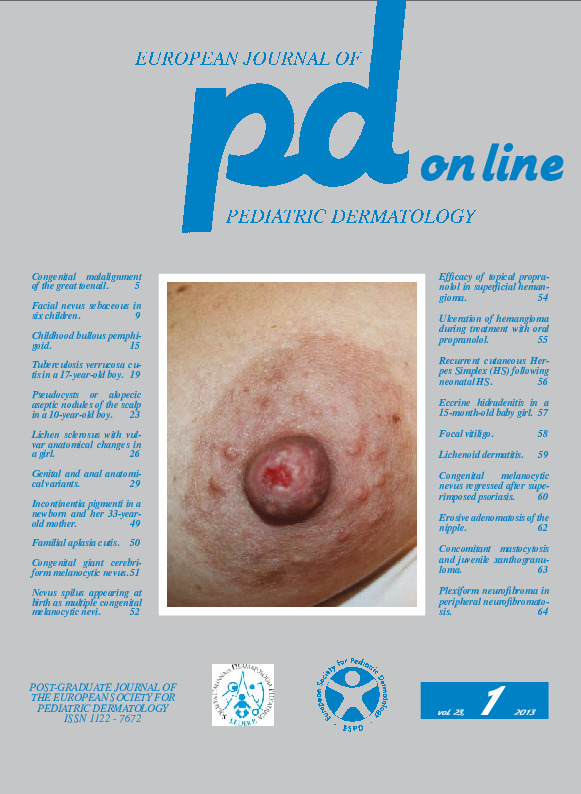Congenital melanocytic nevus regressed after superimposed psoriasis.
Downloads
How to Cite
Bonifazi E., Milano A. 2013. Congenital melanocytic nevus regressed after superimposed psoriasis. Eur. J. Pediat. Dermatol. 23 (1):60-61.
pp. 60-61
Abstract
The congenital melanocytic nevus (CMN), as many other infantile tumors, may regress, i.e. undergo a significant decrease or complete disappearance of melanin and of the number of melanocytes. The regression can take place as an entirely spontaneous process (2), in site of trauma, even only compressive as in site of flexion (5) or in response to inflammatory phenomena. But it must be a particular inflammation because for example in the Meyerson's nevus (6) the inflammation does not induce regression of the nevus. So far we know two types of inflammation which can induce regression of nevi: in addition to the best-known regression with halo, the one with desmoplasia in which the regression is preceded by sclerosis, alopecia, and pruritus of the nevus (4). A psoriatic skin lesion is able to induce regrowth of the hair in people with alopecia areata universal and regrowth appears limited to the area covered by psoriasis (3): in these cases we speak of Renbok phenomenon and suppose a competition between two different populations of sensitized lymphocytes; but CMN is not an autoimmune disease. Recently, some Authors showed a significant reduction of melanocytic nevi in psoriatic subjects, compared to a control group. In an attempt to explain this finding, the Authors speculated that cytokines characteristic of psoriatic inflammation, such as IL-1, IL-6, TNF-α and TGF-β1 may inhibit the synthesis of melanin and melanocytic proliferation, citing numerous theoretical data to support their hypothesis (1).Keywords
Congenital melanocytic nevus, psoriasis

